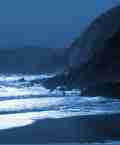

Castle Caulfield,
County Tyrone
Sir Toby Caulfield, later Lord Charlemont, must have had a very strong desire to live like an English gentleman, for he was prepared to build an unfortified English-style mansion in an unsettled area of Ulster during the period 1611-19. Described by Pynnar in 1619 as "the fairest building in the north", it had three storeys in a U-shaped plan - the northwest wing of which has now disappeared. It had fireplaces in projecting breasts and massive chimney stacks capped with octagonal stone shafts, as well as flat-headed mullioned and transomed windows, most of which have been torn out. The gatehouse, with its vaulted passage and guard chambers, probably belong to an earlier O'Donnelly bawn on the site. During the 1641 Rebellion the house was burnt by Patrick "the Gloomy" O'Donnelly and some of the interior stonework still shows signs of scorching. In the 1660s the house was partially rehabilitated by the Caulfields, who were in residence in 1670 when Archbishop Oliver Plunket was permitted to use the courtyard for ordinations. It was probably disused by 1700 and was a ruin when John Wesley preached in front of the gates in 1767.
Castlecaulfield village. NGR: H 755626.
Click here Irish Castles to buy the newly reformatted book from Amazon.co.uk. The previous edition of Irish Castles is also still available from Amazon.co.uk.
